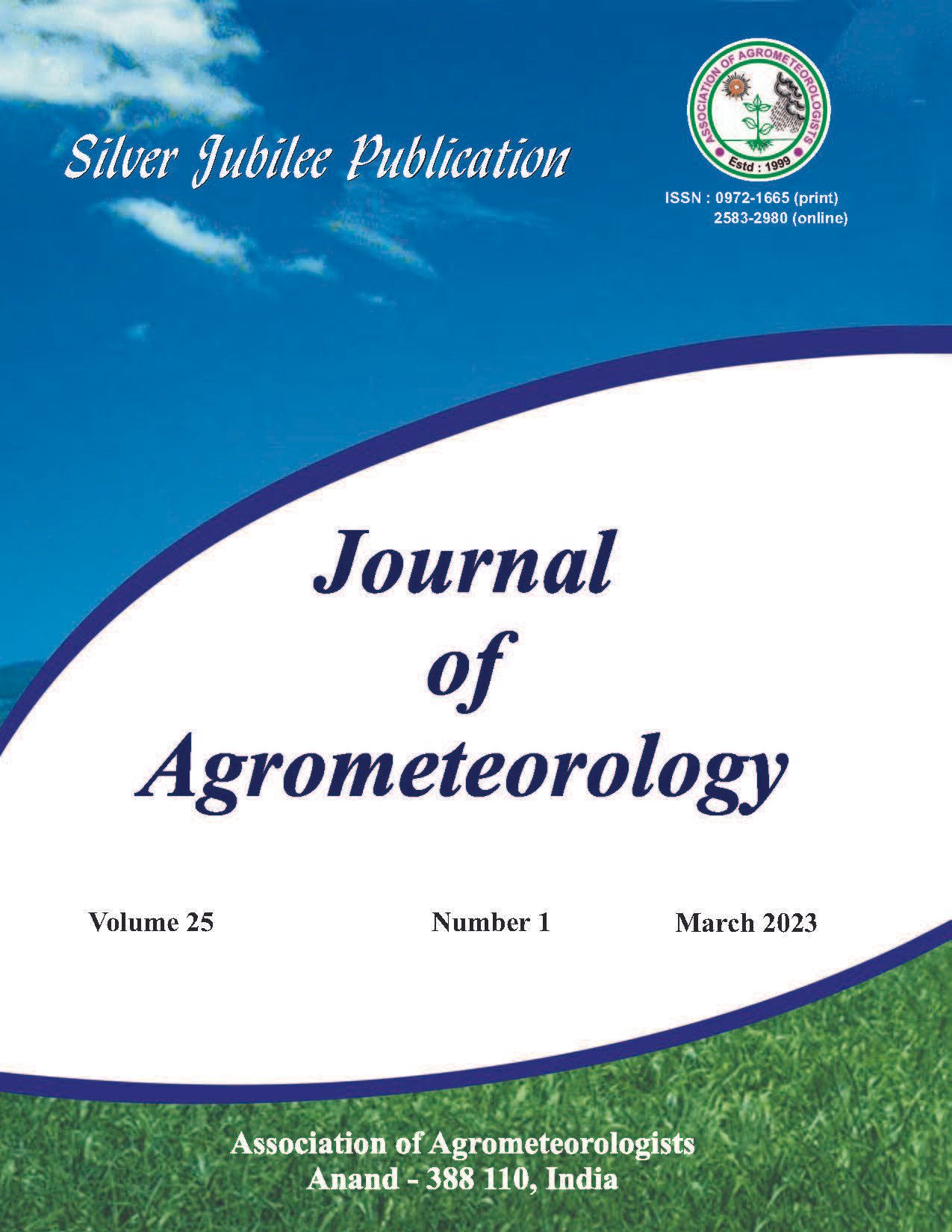Satellite agromet products and their adaptation for advisory services to Indian farming community
DOI:
https://doi.org/10.54386/jam.v25i1.2084Keywords:
Agromet Advisory, Satellite, Agromet Products, GKMSAbstract
Anomalous and erratic behaviour of weather pose various challenges for agricultural community from crop sowing to post harvest. The balance between turn-around-time for farm operations and resource optimization can limit the expected losses due to unfavourable weather. In the past, thrust was given to issue agromet advisories to farmers for a group of districts and blocks primarily using medium-range weather forecast with coarser grid resolution, crop records and point observation for crop condition. The current advisory framework under Gramin Krishi Mausam Seva (GKMS) of India Meteorological Department (IMD) lacks in, near real time assessment of crop and soil conditions to improve the quality and coverage of advisories. The spectral observations from polar and geostationary satellites provide agromet products for synoptic, real-time and continuous monitoring of crops. In order to strengthen the existing advisories under GKMS, the usage of satellite derived daily agromet products in six AFMUs (Agro-Met Field Units) (382 blocks of 60 districts) was initiated by Space Applications Centre, ISRO and IMD. Several agromet products such as Normalized Difference Vegetation Index (NDVI), Potential Evapotranspiration (PET), Surface Dryness Index (SDI), Minimum and Maximum Land Surface Temperature (LST) and Surface Soil Moisture (SSM) aggregated for block and district agricultural regions are provided to all six AFMUs in user friendly format since October 2019 through a dedicated web link
from VEDAS (https://vedas.sac.gov.in) geoportal. Time series and near real-time agromet products during agricultural seasons are being used to interpret crop sowing prospect, crop condition, irrigation requirement, crop stress etc. at block and district scales. Regular evaluation of these products over respective AFMUs with measured ground data showed 9% and 10% difference for PET and SSM respectively, whereas, LST showed RMSE of 2.0 K. In future, crop specific agromet parameters and their short-term forecasting are primary focus to provide value-added quality advisories at Gram Panchayat level to all AFMUs.
Downloads
Published
How to Cite
Issue
Section
License
Copyright (c) 2023 RAHUL NIGAM, BIMAL BHATTACHARYA, MEHUL R PANDYA

This work is licensed under a Creative Commons Attribution-NonCommercial-ShareAlike 4.0 International License.
This is a human-readable summary of (and not a substitute for) the license. Disclaimer.
You are free to:
Share — copy and redistribute the material in any medium or format
Adapt — remix, transform, and build upon the material
The licensor cannot revoke these freedoms as long as you follow the license terms.
Under the following terms:
Attribution — You must give appropriate credit, provide a link to the license, and indicate if changes were made. You may do so in any reasonable manner, but not in any way that suggests the licensor endorses you or your use.
NonCommercial — You may not use the material for commercial purposes.
ShareAlike — If you remix, transform, or build upon the material, you must distribute your contributions under the same license as the original.
No additional restrictions — You may not apply legal terms or technological measures that legally restrict others from doing anything the license permits.
Notices:
You do not have to comply with the license for elements of the material in the public domain or where your use is permitted by an applicable exception or limitation.
No warranties are given. The license may not give you all of the permissions necessary for your intended use. For example, other rights such as publicity, privacy, or moral rights may limit how you use the material.





